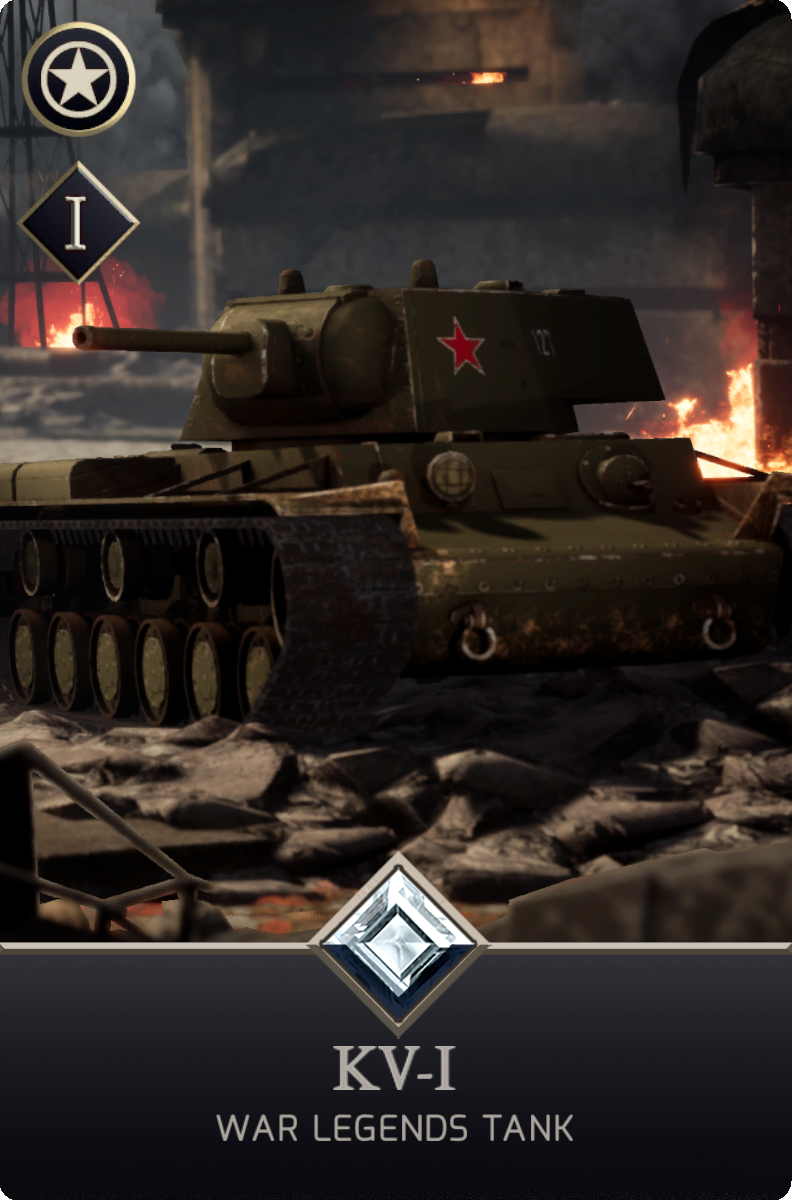


Tank Background
During 1936, the Russians were looking for a heavy, powerful tank that could sweep through enemy lines, destroy fortifications and withstand a large number of projectiles, even from other tanks, without compromising mobility.
To this purpose, they made modifications to the T-28 tank such as the T-35 and T-100 to make them much more lethal and powerful. However, problems of mobility and control in battle and the difficult maintenance of these tanks meant that they did not make it past the prototype stage. Despite this, another variant of the T-28 was created, the KV, which was designed by the SMK's development team as a single-engine variant. During testing, the KV outperformed the other prototypes and was approved for a 50-unit pre-series under the name KV-1.
Along with the SMK, the KV, named after People's Defense Commissar and political statesman Kliment Voroshilov, was essentially a single-turret variant, the saved weight of which was used for additional frontal and side protection, without sacrificing mobility. It was not initially intended for production, but they received the direct approval of Stalin himself.
The 1939 model approached 45 tons in weight, with a narrow 6.75 m hull and large tracks. The wide upper wings provided ideal storage space. The driver sat in the center and the radio/machine gun operator on the left, while the other three crew members sat in the turret and below it. He did not have much visibility as the viewing slits were narrow and his viewing periscope did not cover much distance. The commander/loader had two turret periscopes. The wheel train consisted of front support wheels, rear sprockets and a set of 6 twin bogies. There were also three large, thick support rollers due to the weight of the tracks. These tracks had excellent traction on soft ground such as snow and mud.
The protection, which reached 90mm at the front, was unmatched for the time; the only ones that could be compared were the British 80mm Matilda II and the French 70mm B1 bis, but it was far ahead of any German tank.
As these tanks began to be produced in 1940, at a slow pace, only a handful of KV-1s were operational when Operation Barbarossa began compared to the rest of the armored units. They first faced the Wehrmacht on 23 June 1941 at the Battle of Raseiniai where they met little resistance from German shell calibers, while they obliterated everything in front of them.
Many alarming reports all pointed in the same direction. These "new" Russian tanks were almost unstoppable. In fact, their existence had been one of the biggest mistakes of German intelligence before the invasion. They were one of the greatest dangers at the beginning of the war.








